Immunomodulatory Role of Neuropeptides in the Cornea
- PMID: 36009532
- PMCID: PMC9406019
- DOI: 10.3390/biomedicines10081985
Immunomodulatory Role of Neuropeptides in the Cornea
Abstract
The transparency of the cornea along with its dense sensory innervation and resident leukocyte populations make it an ideal tissue to study interactions between the nervous and immune systems. The cornea is the most densely innervated tissue of the body and possesses both immune and vascular privilege, in part due to its unique repertoire of resident immune cells. Corneal nerves produce various neuropeptides that have a wide range of functions on immune cells. As research in this area expands, further insights are made into the role of neuropeptides and their immunomodulatory functions in the healthy and diseased cornea. Much remains to be known regarding the details of neuropeptide signaling and how it contributes to pathophysiology, which is likely due to complex interactions among neuropeptides, receptor isoform-specific signaling events, and the inflammatory microenvironment in disease. However, progress in this area has led to an increase in studies that have begun modulating neuropeptide activity for the treatment of corneal diseases with promising results, necessitating the need for a comprehensive review of the literature. This review focuses on the role of neuropeptides in maintaining the homeostasis of the ocular surface, alterations in disease settings, and the possible therapeutic potential of targeting these systems.
Keywords: antigen-presenting cells; cornea; immune cells; kinetics; neuroimmune interactions; neuropeptides; ocular immune privilege; ocular surface; receptors; trafficking.
Conflict of interest statement
The authors declare no conflict of interest.
Figures

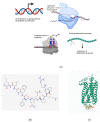
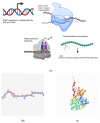
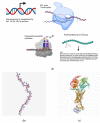
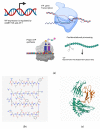
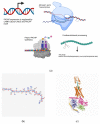


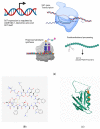
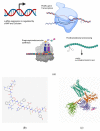
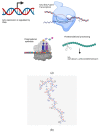
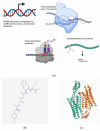
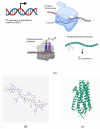
Similar articles
-
Neuroimmune crosstalk in the cornea: The role of immune cells in corneal nerve maintenance during homeostasis and inflammation.Prog Retin Eye Res. 2022 Nov;91:101105. doi: 10.1016/j.preteyeres.2022.101105. Epub 2022 Jul 19. Prog Retin Eye Res. 2022. PMID: 35868985 Review.
-
Bilateral Alterations in Corneal Nerves, Dendritic Cells, and Tear Cytokine Levels in Ocular Surface Disease.Cornea. 2016 Nov;35 Suppl 1(Suppl 1):S65-S70. doi: 10.1097/ICO.0000000000000989. Cornea. 2016. PMID: 27617877 Free PMC article. Review.
-
Peptidergic innervation of the rat cornea.Exp Eye Res. 1998 Apr;66(4):421-35. doi: 10.1006/exer.1997.0446. Exp Eye Res. 1998. PMID: 9593636
-
The two-faced effects of nerves and neuropeptides in corneal diseases.Prog Retin Eye Res. 2022 Jan;86:100974. doi: 10.1016/j.preteyeres.2021.100974. Epub 2021 Jun 7. Prog Retin Eye Res. 2022. PMID: 34098111 Review.
-
An Experimental Model of Neuro-Immune Interactions in the Eye: Corneal Sensory Nerves and Resident Dendritic Cells.Int J Mol Sci. 2022 Mar 10;23(6):2997. doi: 10.3390/ijms23062997. Int J Mol Sci. 2022. PMID: 35328417 Free PMC article. Review.
Cited by
-
Exploring Novel Therapeutic Targets in the Common Pathogenic Factors in Migraine and Neuropathic Pain.Int J Mol Sci. 2023 Feb 18;24(4):4114. doi: 10.3390/ijms24044114. Int J Mol Sci. 2023. PMID: 36835524 Free PMC article. Review.
-
CGRP Released by Corneal Sensory Nerve Maintains Tear Secretion of the Lacrimal Gland.Invest Ophthalmol Vis Sci. 2024 Apr 1;65(4):30. doi: 10.1167/iovs.65.4.30. Invest Ophthalmol Vis Sci. 2024. PMID: 38635244 Free PMC article.
-
Topical application of calcitonin gene-related peptide as a regenerative, antifibrotic, and immunomodulatory therapy for corneal injury.Res Sq [Preprint]. 2023 Aug 7:rs.3.rs-3204385. doi: 10.21203/rs.3.rs-3204385/v1. Res Sq. 2023. Update in: Commun Biol. 2024 Mar 4;7(1):264. doi: 10.1038/s42003-024-05934-y. PMID: 37609298 Free PMC article. Updated. Preprint.
-
Cord blood-derived biologics lead to robust axonal regeneration in benzalkonium chloride-injured mouse corneas by modulating the Il-17 pathway and neuropeptide Y.Mol Med. 2024 Jan 3;30(1):2. doi: 10.1186/s10020-023-00772-w. Mol Med. 2024. PMID: 38172658 Free PMC article.
-
A, B, C's of Trk Receptors and Their Ligands in Ocular Repair.Int J Mol Sci. 2022 Nov 15;23(22):14069. doi: 10.3390/ijms232214069. Int J Mol Sci. 2022. PMID: 36430547 Free PMC article. Review.
References
-
- Hamrah P., Zhang Q., Liu Y., Dana M.R. Novel Characterization of MHC Class II–Negative Population of Resident Corneal Langerhans Cell–Type Dendritic Cells. Investig. Ophthalmol. Vis. Sci. 2002;43:639–646. - PubMed
Publication types
Grants and funding
LinkOut - more resources
Full Text Sources
Research Materials

